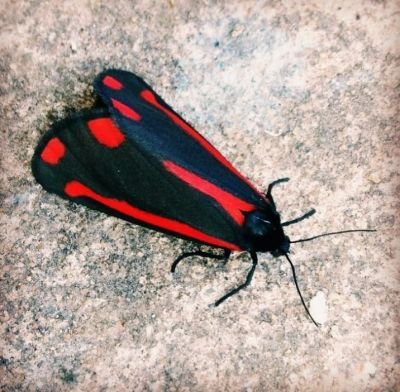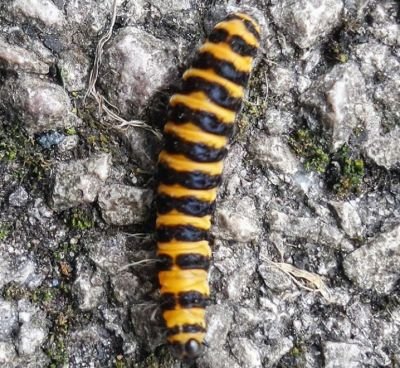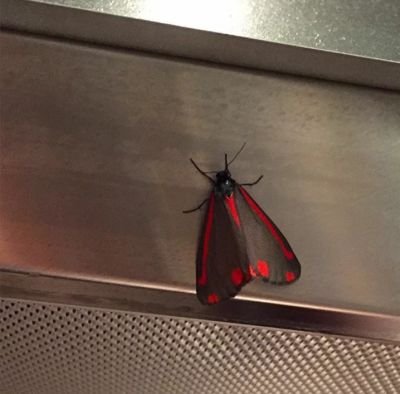
Tyria jacobaeae (Cinnabar moth) is a moth found in Europe and western and central Asia. The moth was named after the red mineral cinnabar due to red patches on the black-dominated wing. Cinnabar moth has a length of about 20mm and has a wingspan of 1.3-1.7 inches. Cinnabar moth is a flying soul of the day. Like many other brightly colored moths, it's not delicious, the larvae use members of the genus Senecio as foodplants. Female Moths can spawn up to 300 eggs, usually in batches of 30 or 60 at the bottom of the ragwort leaf. When caterpillars (larvae) hatch, they suckle and the eggs are hatched, as they grow larger and their pepper (instar) is encrusted with leaves and flowers of plants, and can be seen in the open during the day.

cinnabar caterpillars can turn into cannibalistic. This is mainly due to lack of food, but they can eat other cinnabar larvae. Initially, the larvae are pale yellow, but the larval stage then develops a black and orange / yellow striped dye. Very few survive to the pupal stage, especially since they actually consume food sources before they reach adulthood; this could be a possible explanation for their tendency to engage in seemingly randomized cannibalistic behavior, as many will die of starvation. In addition, the larvae are preceded by species such as Formica polyctena ants.

Sort: Trending